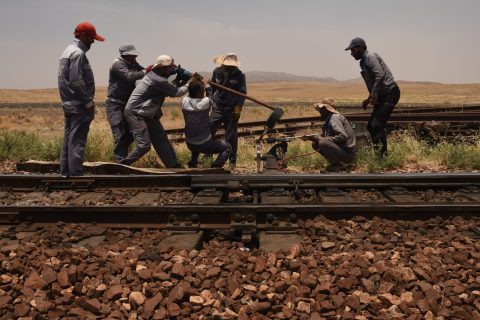Rail Freight Corridors vital for traffic between EU-Asia

BRI is a cornerstone when it comes to connecting EU with Asia. However, by improving existing links and closing gaps that concern alternative destinations, rail transportation can run smoother and sometimes even faster in the Eurasian rail landbridges. This is the stance of Gerhard Troche, who shared his insights on the operation of the Rail Freight Corridors and their importance in conjoining Asia-EU.
Gerhard Troche is the Managing Director of Rail Freight Corridor ‘Amber’. He is a speaker at the European Silk Road Summit, which takes place online on 10 and 11 November. During an extensive interview, he will highlight the objectives, structures and services of the RFCs, as well as future developments.
RFCs constitute a vital part of the European rail network and a crucial component of the connection between EU-Asia. Securing the smooth operation of the routes is of note since transcontinental rail transport is increasing in the European market. “There is a need to facilitate cross-border traffic in the Eurasian rail landbridges as much as possible, and this requires a joint effort by all parties concerned”, said Troche.
Eurasian connection
The positive development of Rail Freight Corridors during the past few years has proved critical in closing gaps and improving rail traffic flows between the two continents. BRI, though, is not the only target when the discussion comes to the corridors’ policy and vision for the future. “All measures and infrastructure investments that can help the rail links to alternative routes are welcome” mentioned Troche, while focusing the attention to the broader Asian picture.
Nevertheless, Europe can surely benefit from its cooperation with BRI due to the “potential of a growing traffic demand”, that can prove favourable for the corridors and their customers too. As a result, what is crucial at the moment is to ensure the “harmonised development of rail connections that will also include countries such as Russia or Kazakhstan”. In such a case, the constant exchange and collaboration between EU-China are of undisputed and high importance.
Rail Freight Corridors
Furthermore, Gerhard Troche also focused on the operation of the ‘Amber’ corridor, which includes the border-crossing Malaszewice/Terespol, at the Polish-Belarussian border. The specific border-crossing, in terms of volumes, constitutes the most crucial entry point in Europe for Eurasian rail traffic. “The rising demand for transshipment volumes and the increasing frequency of train operations between EU-Asia”, are challenges that need to be confronted and resolved, added Troche. Nonetheless, RFCs are responding to these challenges by improving infrastructure, for instance. Electrification is of central importance and corridors, such as ‘Amber’, provide fully electrified routes. Additionally, the whole network of corridors is continually developing towards similar directions to facilitate even more rail freight traffic.
At the same time, there is still a need to furtherly address some internal EU issues, that will allow connectivity with Asia to be even more effortless. According to Troche, “tasks such as cross-border traffic, and adaptations in infrastructure and national rules, concern everybody”. Consequently, an implementation of changes should be prioritised “to make sure that the Eurasian transport chains will continue functioning with high standards, optimal capacities for rail freight and stability”.
European Silk Road Summit
Do you want to hear all about the developments on the New Silk Road in 2020? On 10 and 11 November, the online edition of European Silk Road Summit 2020 takes place. The impact of the pandemic, the current volumes and the forecasts for the year to come are other topics on the programme. Have a look here or register here.
You just read one of our premium articles free of charge
Want full access? Take advantage of our exclusive offer





